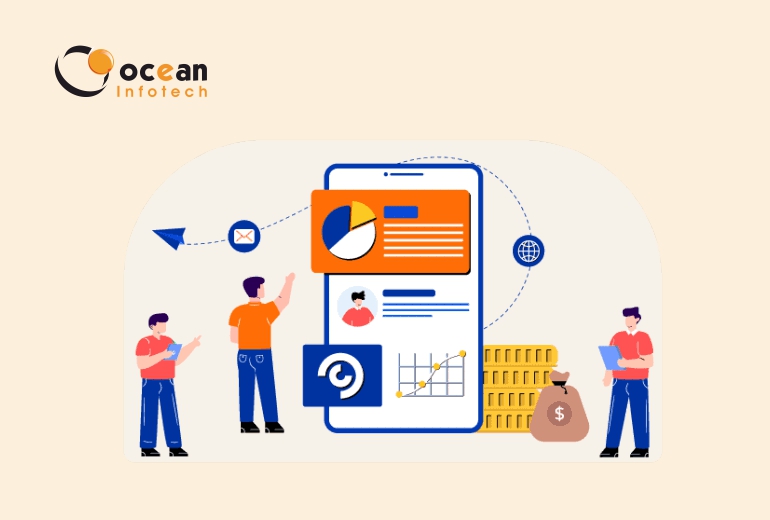Clients spent 22.6 billion USD globally on mobile apps. It is estimated that 178+ billion applications are downloaded each year, and this number will increase to 258 billion in 2022. These figures show the staggering amount of money spent by on various factors related to business app improvement. The fundamentals, such as the type of business, the target users, and the services, are used to create the budget for the app. The time involved in the process increases as the complexity of the business app model grows. As time increases, so will the cost. Apps are valued differently depending on the purpose and cost ratio with middle enterprise functions. The complexity and quality of the app will determine the number of app developers an organization can hire. App improvement companies can be relied upon by any organization. There are also hundreds of independent app developers who can help businesses. These 3 solutions all serve the same carrier, regardless of the difference in throughput. The mobile app development service is different in terms of cost and turnaround times. The platform to be used for building mobile apps will depend on the enterprise model. It is important to make an app available for Android and iOS if the provider needs it. There are two options for app development: local or hybrid. To scale up the potentialities of their enterprise, many businesses create hybrid and local apps. These are usually for Android or IOS. App development costs vary widely depending on the design and functionality. In accordance with the Android app development services, enhanced capabilities are expected to be added for seamless performance of tasks and a better user experience. In order, an intuitive interface and a great layout must be included. Several functional models, including list-based applications and real-time service-based apps, incur different cost variables during the app development process. The simplest and cheapest model is a list-based app that does not require a server-based service. Dynamic utility, however, requires a lot of effort and costs. A cell app's primary purpose is to offer eCommerce app development within users' mobile devices. The seamless rendering of iOS app development services by a cell app is the key to its success. The app should be easy to use and not cause confusion for the user. It is important to structure features carefully. A price app, for example, has a lot of security features and a simple navigation interface. But a food delivery app is a guide from the beginning to the end of the process, with multiple integrations of services, including the location, the conversation, the price, and real-time popularity. As the feature advances, so will the cost of the app development process. Mobile applications transmit a large amount of data and exchange them in real-time. This data may include personal transactions, search information, employee details, etc. A vulnerability in the data can be the end of a business. The importance of a slicing-area security feature in an app hosting provider is huge. In accordance with the business size and density of site visitors, it is important to rent the appropriate server. To ensure a smooth and uninterrupted service, only dedicated servers with multi-layer security are recommended. It is more expensive than shared hosting. The cost of app protection is not a waste. Multi-layer authentication and app security layers are not a waste of money, as customers' belief in safety is evolving. Mobile apps require periodic renovation, in different terms- application updates. App developers must also provide enough technical support to ensure that applications run smoothly. In order to keep up with the rapid evolution of the app platform, companies need to update the integrations and functionality. It increases the costs even after the software is launched. Corporate-level applications need to update their APIs regularly to refine apps consistently and improve user experience. App protection administrators also face a difficult task in eliminating hidden bugs and eavesdroppers. It is a lifelong technique that requires regular monitoring and maintenance. Your utility will only be successful if your users (UX) are happy and the User Interface (UI). It's difficult to design an app with a simple UI/UX and there will be additional costs. If you want to influence your users, then UI/UX add-ons such as push notifications, icons, and photo images are necessary. Your customers will be more inclined to use your app if you have a good layout. App protection is often overlooked by companies, despite its importance. It is important that your software keeps the information retrieved from clients safe. Losing records can also make you appear untrustworthy to existing and potential customers. As you expand your software, it is wise to invest in data security. A first-rate safety breach can ruin your enterprise. Let's check the important variables influencing cellular app development cost
Business Model Type
App Development Team
App Building Platform
App Design and Functionality
App Features and Testing
App Hosting and Security
App Updates and Maintenance
App UI/UX
App Security


What are the factors that affect the cost of developing mobile apps
Mobile App Development cost is influenced by a number of factors. The main cost drivers of native application development are its building strategy and platform, device compatibility with the app, app functionality, security, testing and hosting. The running business model of an organization is the most important factor in determining the other ad-hoc cost requirements.
Let's discuss and work together for your project.
Just drop us line on info@oceaninfotech.co.in or just say HI in chat box, We would love to hear from you.

